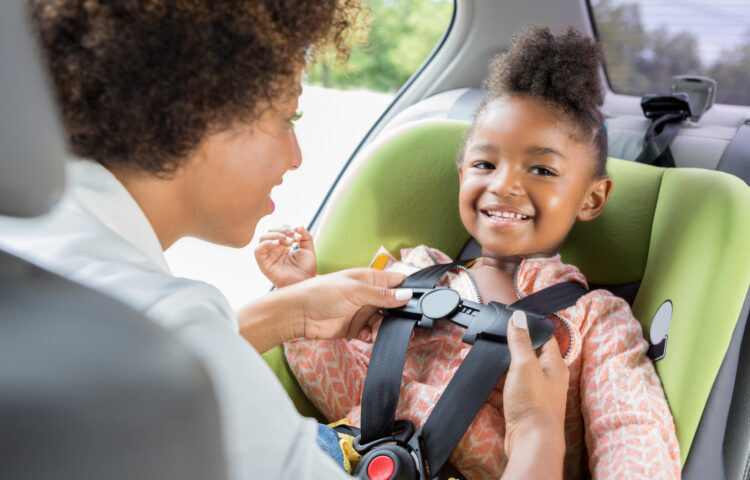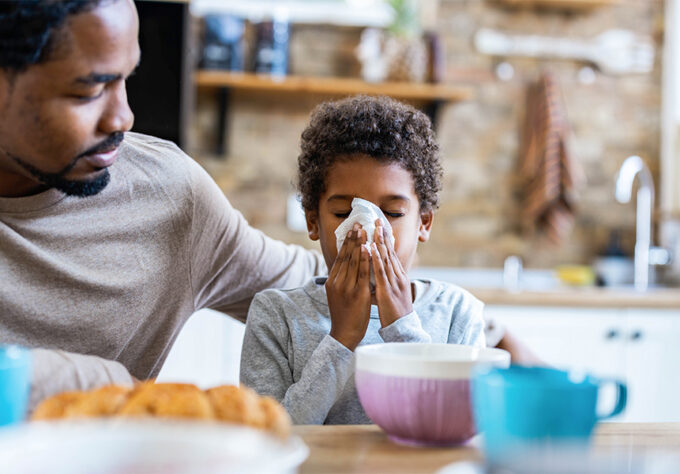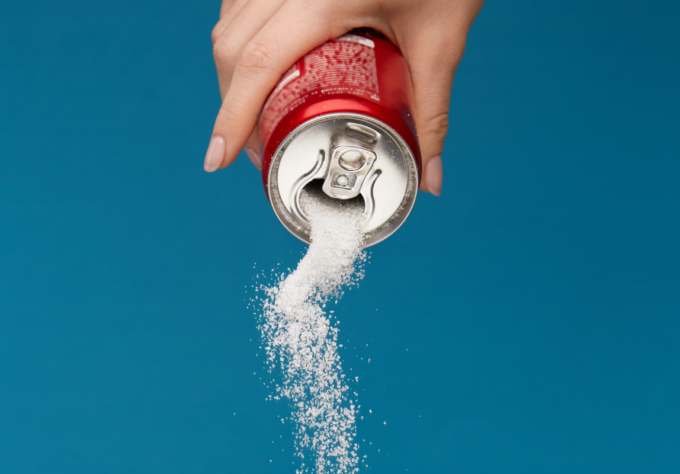As a parent, you want the very best for your children. One of the most important things you can do is make sure your kids are as safe and secure as possible while riding in your car.
Keep Your Kids Buckled Up Every Time
Parents and caregivers can keep children safer every time they ride in the car by doing the following:
- Know the proper way to use car seats, booster seats and seat belts.
- Use appropriate seats and seat belts with your children on every trip in the car, no matter how short.
- Set a good example by always using a seat belt yourself.
A Car Seat Safety Guide
There are many car seat and booster options available to parents and caregivers to use in protecting children while driving. Use this guide to help determine the best way to keep children safe in the car.
Rear Facing Car Seat
In 2018, the American Academy of Pediatrics released a report on Child Passenger Safety stating that children should ride in a rear-facing car seat for as long as possible, up to the limits of the seat.
Just as it sounds, this car seat faces the rear of the vehicle and has a harness that cradles and moves with your child to reduce the stress to their neck and spinal cord in the event of an accident. Infant car seats are designed for newborns and small babies. Your little one will probably outgrow this seat by the time they reach 12 months, but this can vary greatly from infant to infant. At that point, parents should purchase a convertible or all-in-one car seat and use it rear-facing.
Both convertible and all-in-one seats have a harness and can change from rear-facing to forward-facing, working with children of various sizes. The all-in-one option also changes to a booster seat.
Try to keep your child rear-facing for as long as possible; children should remain in a rear-facing car seat until they reach the top height or weight limit allowed by your car seat’s manufacturer (usually from birth to two-years old or longer if the height and weight limits allow).
Forward Facing Car Seat
Once your child outgrows the rear-facing car seat, they’re ready to travel in a forward-facing car seat with a harness.
Forward-facing car seat options include the convertible and all-in-one options described above, as well as a combination seat, which transitions from a forward-facing seat with a harness into a booster seat. Keep your child in a forward-facing car seat with a harness until he or she reaches the top height or weight limit allowed by your car seat’s manufacturer. Children are much safer in a harness. Many seats on the market have higher height and weight limits. Some car seats even have a harness weight up to 80lbs.
Booster Seat
Once your child outgrows the forward-facing car seat ( the minimum being age four and at least 40 lbs. but we recommend keeping them in a harness longer if the weight and height limits of the car seat allow), they can move into a booster seat. There are several types of booster seats, which boost your child’s height and positions the seat belts so that they fit properly over the stronger parts of your child’s body. Details about combination and all-in-one seats, which convert to boosters, are listed above. The other booster seat options are ones with high backs and backless. High-back seats provide neck and head support and are an ideal option for vehicles that don’t have headrests or built-in seats with backs. Backless seats do not provide head and neck support and work best with cars that have headrests and built-in seats with high backs.
Seat Belts Save Lives
Once your child is too big for a booster seat, they should be able to fit into a seat belt properly. A seat belt fits properly when the lap belt lies snugly across the upper thighs (not the stomach) and the shoulder belt lies snugly across the shoulder and chest (does not cross your child’s neck or face). And keep them in the back seat, until at least age 13).
Knowing the Risks – Car Seat Safety Works
Car crashes are one of the leading causes of death and injury for children and adolescents, so using the right car seat, and being sure to buckle up at every age, in every seat, every time you drive, can save your child’s life. If you have been unfortunate to have been involved in a car accident, it could be preferential to consult a law firm like warriorsforjustice.com. A consultation could help you have a better idea on how you can move forward with any legal action you might take. My friend was recently telling me about a car accident they using their car seat correctly. Because of this, they were able to claim from their car insurance brokers uk. Both death and injury can be prevented when parents and caregivers properly use car seats, boosters, and, when kids are old enough, seat belts while riding in the car.
According to the Centers for Disease Control and Prevention, in 2016, 723 children under the age of 12 died in motor vehicle crashes, and more than 128,000 were injured. Of those who died, 35% were not buckled up.
Buckling children in age- and size-appropriate car seats, booster seats and using seat belts reduces the risk of serious and fatal injuries.
- Using car seats reduces the risk for injury in a crash by 71-82% for children when compared to seat belt use alone.
- Using booster seats reduces the risk for serious injury by 45% for children aged 4–8 years when compared with seat belt use alone.
- For older children and adults, seat belt use reduces the risk for death and serious injury by approximately 50%.
The recommended age ranges for seat types vary because of differences in child growth and height / weight limits of car seats. Your vehicle’s and car seat owner’s manual will instruct you on how to install your child’s seat, as well as give you the seat’s height and weight limits. You can also get help installing your child’s car seat from a certified Child Passenger Safety Technician. To schedule an appointment for a free car seat inspection at Nemours/Alfred I. duPont Hospital for Children, email cpsstation@nemours.org or call 302-651-5437.



